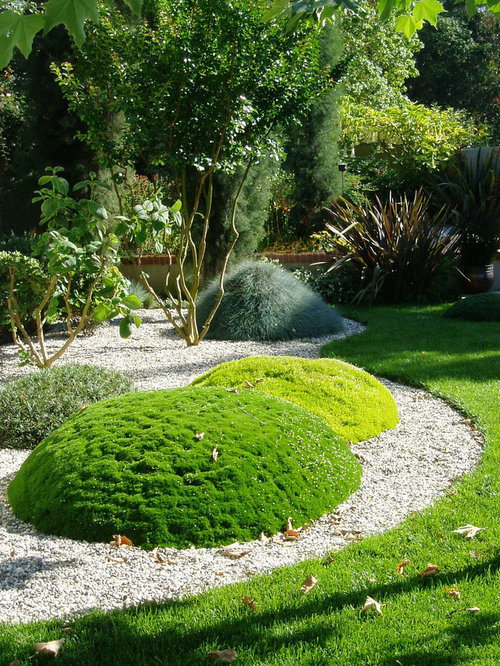
Landscape design can be an independent vocation and a design and fine art custom, practised by panorama designers, combining aspect and culture. In modern-day practice, scenery design bridges the area between landscape structures and garden design.Design scopeLandscape design targets both the built-in master landscaping planning of a house and the precise garden design of panorama elements and vegetation within it. The useful, visual, horticultural, and environmental sustainability are also the different parts of landscape design. It is split into hardscape design and softscape design. Landscaping designers often collaborate with related disciplines such as structures and geography, soils and civil executive, surveying, panorama contracting, botany, and artisan specialties.

Design tasks may entail two different professional functions: scenery design and scenery architecture.- Surroundings design typically consists of artistic structure and artisanship, horticultural finesse and competence, and focus on detailed site engagement from conceptual phases through to last construction.- Landscape architecture centers more on metropolitan planning, city and local parks, civic and corporate and business landscapes, large level interdisciplinary assignments, and delegation to companies after doing designs.There may be significant overlap of expertise and skill between your two roles, with regards to the education, licensing, and connection with the professional. Both scenery designers and surroundings architects practice panorama design.

Design approachDesign factors include objective characteristics such as: local climate and microclimates; topography and orientation, site drainage and groundwater recharge; municipal and source of information building rules; soils and irrigation; individual and vehicular gain access to and blood flow; recreational amenities (i.e.: activities and drinking water); home furniture and lighting; indigenous flower habitat botany when present; property security and safety; building detailing; and other measurable factors.Design factors likewise incorporate subjective attributes such as: genius loci (the special site features to highlight); client's needs and choices; desirable plant life and elements to keep on site, alter, or replace, and which may be designed for borrowing of landscape ("shakkei") from beyond; imaginative structure from perspectives of both looking after and watching from within; spatial development and definition--using lines, sense of level, and balance and symmetry; flower palettes; and creative things for enjoyment. You will find many other design factors and things to consider taken to the complex procedure for building a garden that is beautiful, well-functioning, which thrives as time passes.

The up-and-coming practice of online panorama design allows professional landscapers to remotely design and plan sites through manipulation of two-dimensional images without ever before physically visiting the positioning. Because of the frequent insufficient non-visual, supplementary data such as earth assessments and pH checks, online landscaping always must give attention to incorporating only vegetation that are tolerant across many diverse ground conditions.TrainingHistorically, landscaping designers trained by apprenticing--such as Andr? Le N?tre, who apprenticed along with his father before building the Landscapes of Versailles--to achieved experts in the field, with the titular name differing and reputation paramount for a profession. The professional portion of garden designers in European countries and the Americas passed the name 'Scenery Gardener.' Within the 1890s, the unique classification of surroundings architect was made, with educational and licensing test requirements for using the subject officially. Beatrix Farrand, the only real girl in the founding group, refused the name preferring Panorama Gardener. Matching your client and complex needs of any project, and the correct practitioner with skill, legal requirements, and experienced skills, surmounts name nomenclature.Institutional education in surroundings design came out in the first 20th century. As time passes it became offered by various levels. Ornamental horticulture programs with design components can be found at community school and colleges within academic institutions of agriculture or horticulture, with some starting to offer garden or scenery design certificates and certifications.Departments of surroundings architecture can be found within university classes of structures or environmental design, with undergraduate and graduate certifications offered. Specialties and minors can be purchased in horticultural botany, horticulture, natural resources, scenery engineering, structure management, fine and applied arts, and surroundings design history. Customarily, hand attracted drawings documented the look and position of features for building, but Panorama design software is generally used now.Other routes of training are through casual apprenticeships with rehearsing landscape designers, landscaping architects, landscape companies, gardeners, nurseries and garden centers, and docent programs at botanical and general population gardens. Because the landscape designer name doesn't have university level or licensing requirements to be utilized, there's a very wide selection of sophistication, aesthetic skill, technical competence, and specialty advantages to be responsibly matched up with specific customer and job requirementsGardeningMany surroundings designers don't mind spending time and engagement with gardening, in person or skillfully. Some integrate this opportunity with the design practice, informally or as accredited landscape contractors. Landscapes are dynamic rather than static after development and planting are completed, therefore in a few ways are 'never done.' Engagement with surroundings management and course of ongoing garden path, evolution, and worry rely upon the professional's and client's needs and inclinations. Much like the other interrelated surroundings disciplines, there may be overlap of services offered under the headings of landscape custom or professional gardener.
Related Images with Mounds in Front Yard Landscaping Gardening: Flower and Vegetables
Landscaping+Mounds Backyard Landscape Design Ideas, what plants to use

landscaping ideas for front yard mound Landscaping Ideas

July. Landscaping Ideas Gardening flowerNursery GardeningNursery

Landscape Mounds Photos


Komentar
Posting Komentar